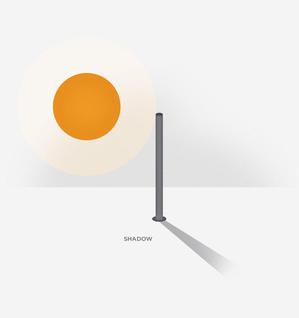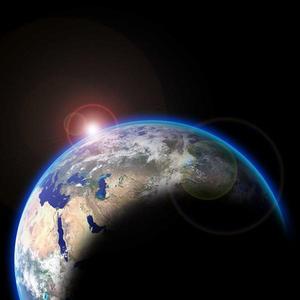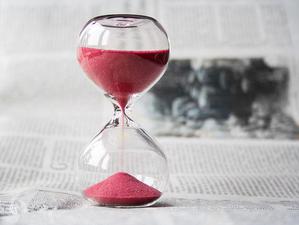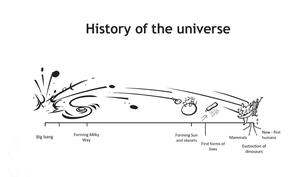Glossary term: Time
Description: All of us have a basic idea of what time is: A progression of events, one after the other, from the past through the present to the future. Yet time is not something that can be seen, heard, smelled, touched, or tasted. It can be measured, though, and that is the aspect of time that matters in astronomy and in physics.
We measure time by comparing the duration of whatever is happening with the duration measured on a clock or, for longer periods of time, on a calendar. Traditionally, measurements of time of this kind have been based on the Earth's rotation. The time it takes the Earth to complete one full rotation (as judged by the position of the Sun) defines the length of one day. The usual subdivisions – one day divided into 24 hours, each hour divided into 60 minutes, each minute into 60 seconds – provide additional units of time.
Since 1967, the definition of time has instead been based on the duration of a second, as measured by a Caesium-133 atomic clock ("SI second"). Several systems of time are defined on this basis, notably Universal Time (UTC) which is used in official time-keeping world-wide, and what is known as the Julian Date and its variations, a continuous counting of days used in astronomy.
Einstein's special theory of relativity and his general theory of relativity have shown that the time that passes on a clock depends both on the motion and on the influence of gravity of that clock. These relativistic effects need to be accounted for in highly accurate measurements of time, such as the ones using the satellites of the Global Positioning System (GPS).
Related Terms:
See this term in other languages
Term and definition status: This term and its definition have been approved by a research astronomer and a teacher
The OAE Multilingual Glossary is a project of the IAU Office of Astronomy for Education (OAE) in collaboration with the IAU Office of Astronomy Outreach (OAO). The terms and definitions were chosen, written and reviewed by a collective effort from the OAE, the OAE Centers and Nodes, the OAE National Astronomy Education Coordinators (NAECs) and other volunteers. You can find a full list of credits here. All glossary terms and their definitions are released under a Creative Commons CC BY-4.0 license and should be credited to "IAU OAE".
If you notice a factual error in this glossary definition then please get in touch.
Related Activities
Sun’s Shadow
astroEDU educational activity (links to astroEDU website) Description: Why is the Sun's shadow so important?
License: CC-BY-4.0 Creative Commons Attribution 4.0 International (CC BY 4.0) icons
Tags:
Hands-on
, Shadows
Age Ranges:
6-8
, 8-10
, 10-12
, 12-14
, 14-16
Education Level:
Informal
, Middle School
, Primary
, Secondary
Areas of Learning:
Observation based
, Social Research
Costs:
Medium Cost
Duration:
1 day
Group Size:
Group
Skills:
Asking questions
, Communicating information
, Constructing explanations
, Engaging in argument from evidence
Day and Night in the World
astroEDU educational activity (links to astroEDU website) Description: Compare diurnal and nocturnal animals and experiment with day and night.
License: CC-BY-4.0 Creative Commons Attribution 4.0 International (CC BY 4.0) icons
Tags:
Life
, Model
, Animals
, Day and night
Age Ranges:
6-8
, 8-10
Education Level:
Primary
Areas of Learning:
Interactive Lecture
, Modelling
, Social Research
Costs:
Low Cost
Duration:
1 hour
Group Size:
Group
Skills:
Asking questions
, Constructing explanations
, Developing and using models
, Planning and carrying out investigations
What Is Time?
astroEDU educational activity (links to astroEDU website) Description: Build an hourglass to understand what time is and how it can be measured.
License: CC-BY-4.0 Creative Commons Attribution 4.0 International (CC BY 4.0) icons
Tags:
Hands-on
, Measurement
, Day and night
, Measure
, Instruments
Age Ranges:
6-8
, 8-10
, 10-12
Education Level:
Middle School
, Primary
Areas of Learning:
Modelling
, Problem-solving
, Social Research
Costs:
Medium Cost
Duration:
1 hour
Group Size:
Group
Skills:
Asking questions
, Developing and using models
, Planning and carrying out investigations
Making a Sundial
astroEDU educational activity (links to astroEDU website) Description: Build a sundial and discover how time can be measured.
License: CC-BY-4.0 Creative Commons Attribution 4.0 International (CC BY 4.0) icons
Tags:
Hands-on
, Measurement
, Measure
, History
, Clocks
Age Ranges:
6-8
, 8-10
, 10-12
Education Level:
Middle School
, Primary
Areas of Learning:
Modelling
, Observation based
, Social Research
Costs:
Medium Cost
Duration:
1 hour
Group Size:
Group
Skills:
Analysing and interpreting data
, Asking questions
, Communicating information
, Developing and using models
History of the Universe
astroEDU educational activity (links to astroEDU website) Description: Build a timeline of the all Universe!
License: CC-BY-4.0 Creative Commons Attribution 4.0 International (CC BY 4.0) icons
Tags:
History
, Timeline
, Mathematics
, Humans
Age Ranges:
8-10
, 10-12
, 12-14
Education Level:
Middle School
, Primary
Areas of Learning:
Problem-solving
, Social Research
Costs:
Low Cost
Duration:
1 hour 30 mins
Group Size:
Group
Skills:
Asking questions
, Communicating information
, Developing and using models
, Using mathematics and computational thinking













